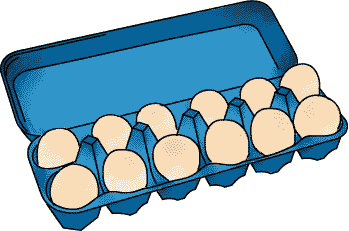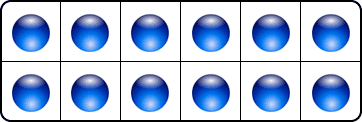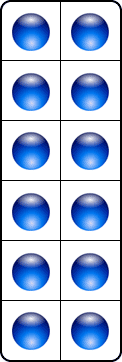|
You can find arrays everywhere you look. In the supermarket you will find cartons of eggs. They often have 2 rows of 3 eggs or 2 rows of 6 eggs. Can you think of any other arrays you might find?

Imagine you have a carton that has 2 rows of 6 eggs. How many eggs do you have in total? How did you work this out? Did you count, or add, or multiply?

One way to work out the number of eggs is to add up each row, for example, 6 + 6. Another way is by multiplying the rows by the columns. In the case of this 2 by 6 array, you can find the total by multiplying 2 x 6.
Did you get 12 for your answer?
What happens if you turn the array onto its side?

You now have an array with 6 rows and 2 columns. How many eggs do you have this time?
Did you notice that if you switch around the two numbers you are multiplying, you get the same answer?
Multiplying 2 by 6 gives us 12, 2 x 6 = 12.
Multiplying 6 by 2 gives us 12, 6 x 2 = 12.
You have just doubled your knowledge of multiplication facts!
If I had a tray of eggs, which holds 4 rows of 6 eggs, how many eggs would I have in total?
Did you get an answer of 24?
Now, what if I turned the tray around and had 6 rows of 4 eggs?
Can you work out the answer?
This time it's 6 x 4, which gives us the same answer of 24.
|